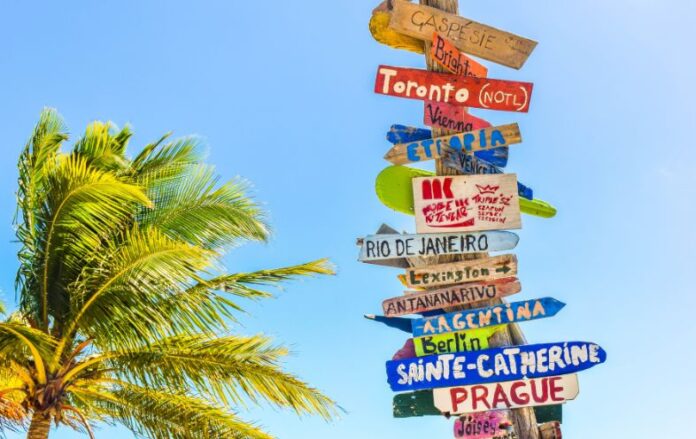Destinations spend significant time, effort, and budget on destination marketing. It is no easy task to package and market a city, region, or country well, and the whole matter can sound rather difficult for someone new to the industry. The jargon used is one of those hurdles – especially surrounding terms like branding, image, marketing, and promotion.
While most of us know what those mean in principle, we wanted to get a clearer picture from leading practitioners and academics – our panel of place specialists. Below their answers (highlighted respondents are available for consulting, research, or as speakers).
Our key takeaways:
- Branding is foremost about identity – looking inside;
- An image is a perception or idea that people have of places (for example);
- Marketing is about creating specific value propositions for customers. It entails product development, pricing, product delivery, and user experience (which to some degree overlaps with the branding process, so those two often go hand in hand);
- Promotion is the communication aspect of marketing, e.g. advertising destination packages, services and products.
 Jonathon Day
Jonathon Day
(Destination) Branding is the deliberate activity of positioning specific attributes of a destination in the mind of the target consumer. Branding is measurable and results from purposeful actions. It is a strategic activity that is achieved with long-term commitment. It is not your next campaign.
(Destination) Image is what a consumer thinks about the destination. Most destination images are created organically – by what we see and hear about the destination from school to movies, from news to actual experience. With just a few exceptions – what we call destination brands are destination images. Destination branding should elevate/leverage elements of the image.
Marketing is the set of activities that create value for consumers and includes product development, product delivery and user experience, pricing, packaging, and purchase experience to name a few.
Promotion is the marketing communication aspect of marketing. From a branding POV, most destination marketers overvalue promotion at the expense of user experience. (Consider – is your understanding of the Apple brand based on their advertisements or you’re using your iPhone, iPad, or computer).
Günter Soydanbay
A brand has two components:
- The part that you can control is the brand identity. Those are the visuals, messages, products and experiences you offer.
- The part that you cannot control is the brand image, you can at best influence that one, but can never control it.
One’s brand image resides in people’s collective psyche. Branding is the process of influencing brand image through creating-managing brand identity.
Natasha Grand
Branding is what you say about the destination and how you stand out, image is what you are hoping to affect or create, and marketing and promotion are what you do to be known (i.e. take branding and put it out).
Todd Babiak
We use the phrase “unifying cultural expression” as a synonym for place brand, which would encompass image and reputation.
Marketing and promotion are the strategies we build out of that unifying cultural expression.
Tom Buncle
A brand is who you are; an image is one representation of it; marketing and promotion are synonymous and are the means through which you communicate your brand.
Adam Mikołajczyk
- Branding – the process of assigning a brand (probably also its management)
- Image – the picture of the brand in the eyes of the beholder (or more likely in his mind)
- Marketing – refers to the whole process of creating territorial products (e.g. tourism) and their promotion (marketing communication) also coordination (including research, monitoring, etc.)
- Promotion (or marketing communication) – refers to the communication of a destination/place brand with potential customers using appropriate communication tools (advertising, PR, etc.)
Andrea Lucarelli
While an image is something usually held by the audience, the other three – branding, marketing and promotion are practices of commercialization of places, which historically overlap and develop with each other.
Caio Esteves
Branding is identity, so it is about looking inside, while an image is the perception of this identity. Marketing is looking outside, offering a place, how to promote a place to meet your strategic objectives aligned with your identity, which will form the image of that place in the minds of the audience.
Of course, this explanation presupposes the process of place branding. Although we can have the image, marketing and promotion without place branding, based exclusively on an idea, desire or objective that may not be based on the identity or reality of a particular place.
Efe Sevin
A lot and not much at the same time. DMOs should not get lost in these theoretical details, provided they have a common vocabulary in their organization.
This common vocabulary, though, should have a word for overall reputation management (branding), which messages are most important for their target audiences (image), and what channels they are using to communicate with these audiences (marketing for the long term and promotion for the short term).
The key is to understand that reputation is not completely controlled by them. They can engage in various activities to manage how they are perceived, but their activities will not be the only ones impacting their reputation.
Gianna Moscardo
- Promotion is the advertising of destination packages, services and products
- Marketing is the development of those packages, services and products to meet market needs
- Image is the perception potential markets have of the destination
- A brand is an image plus a set of associations with that image that establish expectations for tourists about the types of experiences on offer and the value for them and the destination
Steve Noakes
From my perspective, branding impacts all internal and external stakeholders of a destination – it communicates the core values of the place. The marketing team works out the image and how the destination and its products should be positioned in their target domestic and international markets.
Previous questions answered by the panel here. You’d like to ask the panel a question? Get in touch!
Enjoyed this snapshot of expert views on the meaning of branding, marketing, promotion and image? Spread the word!






